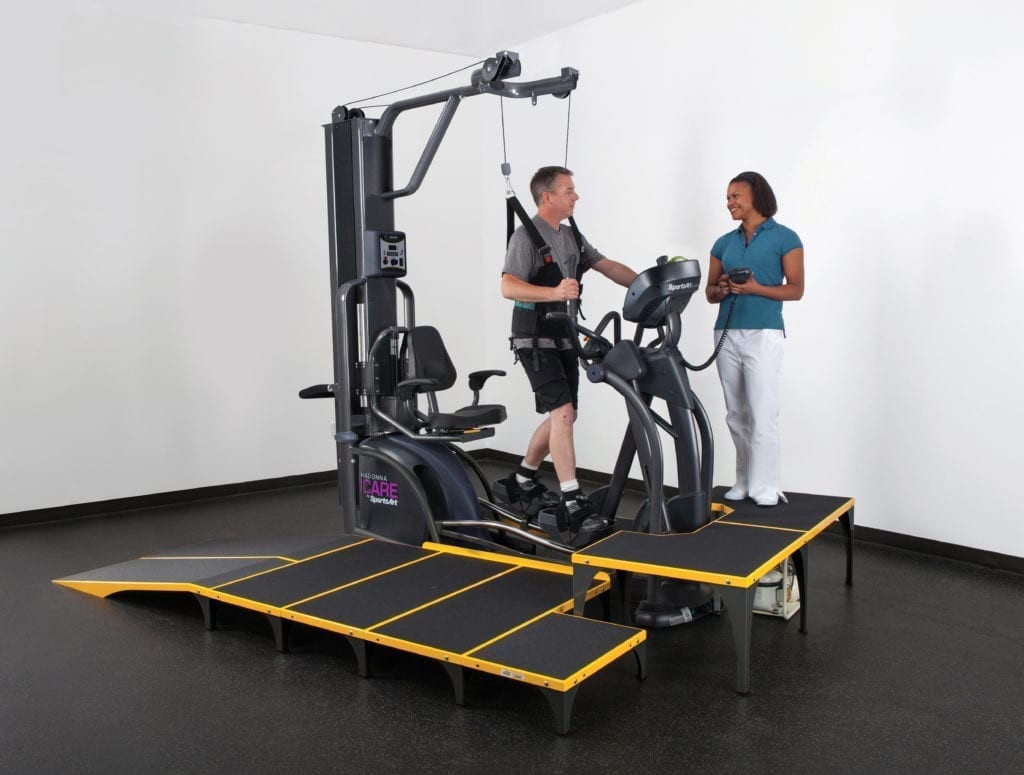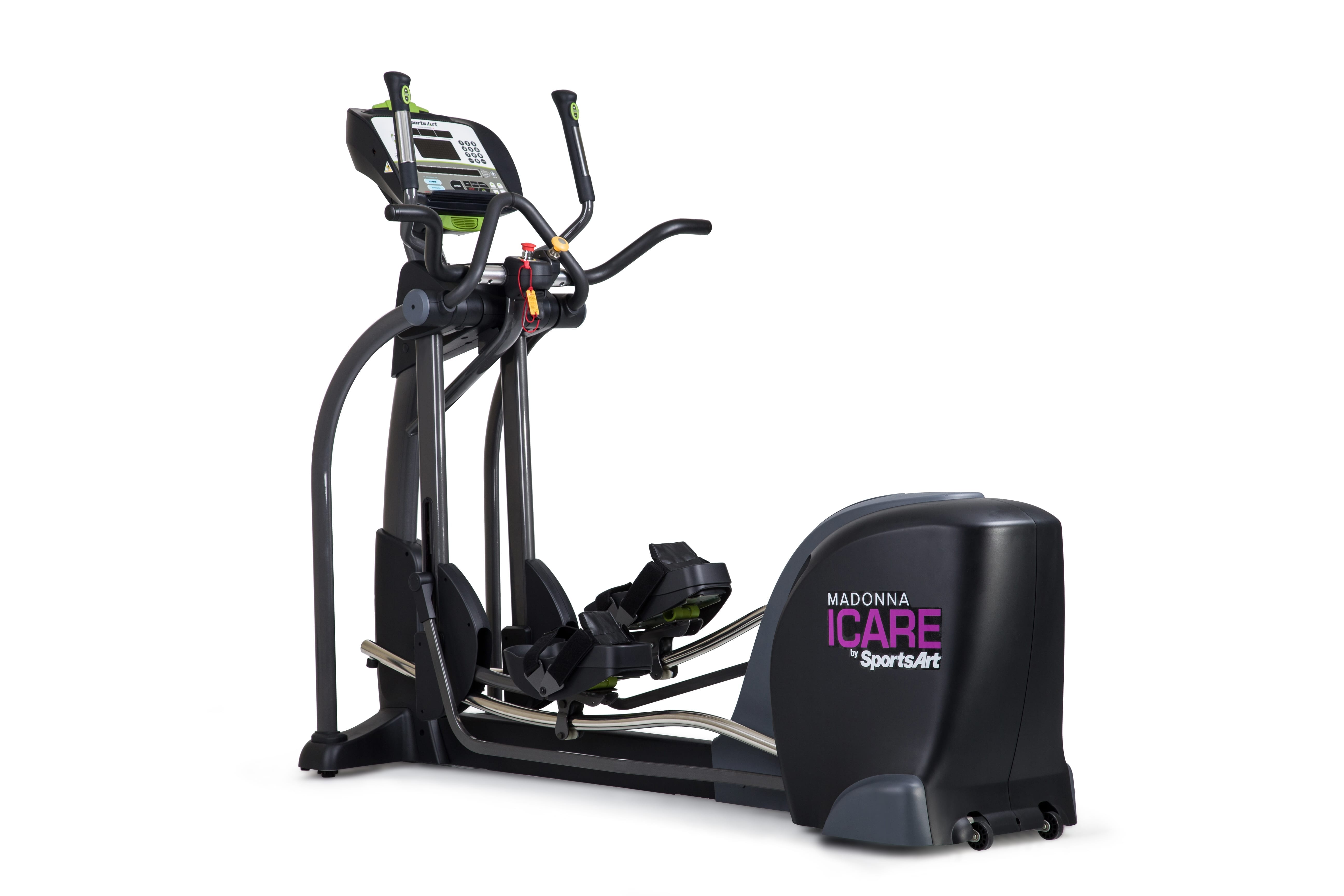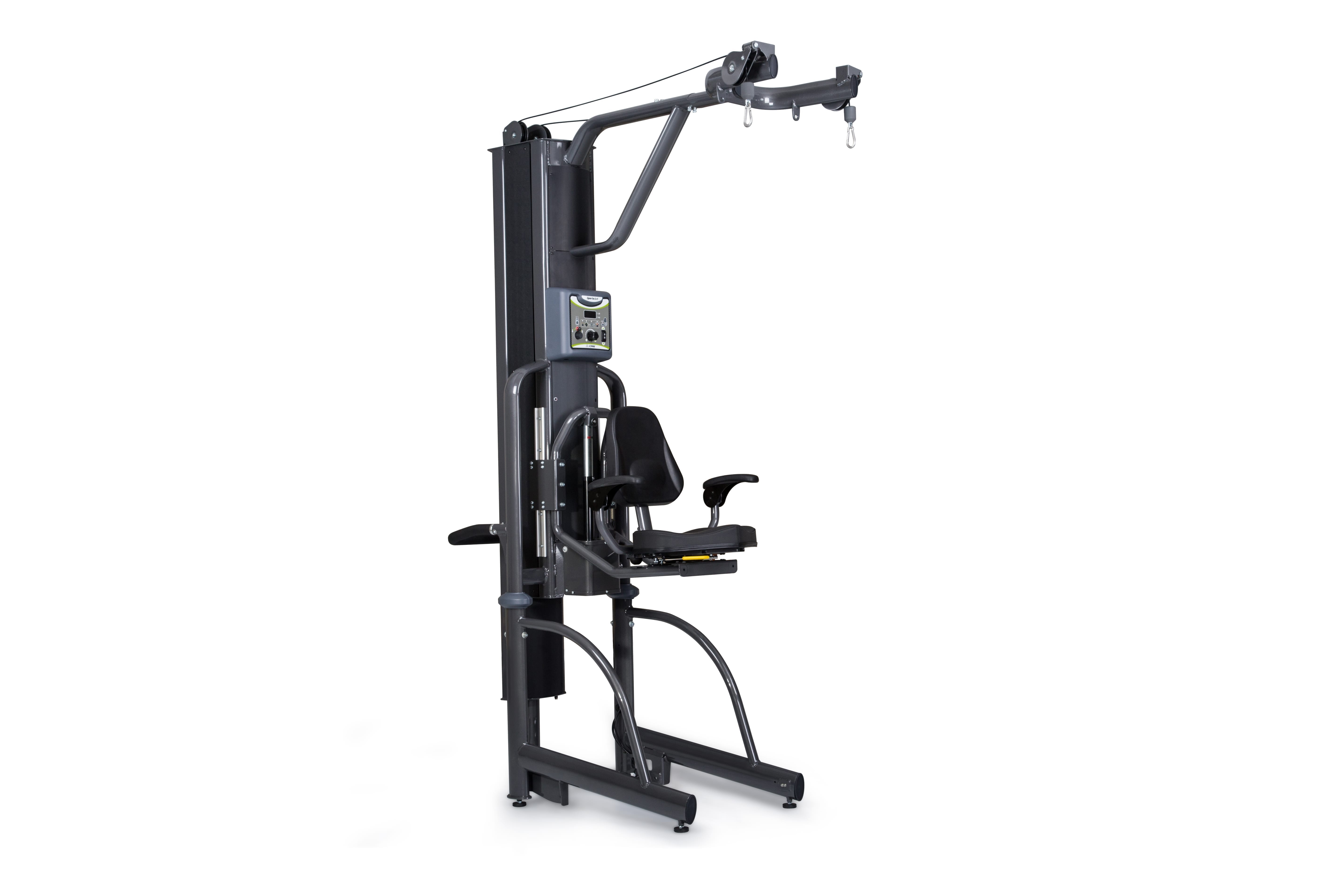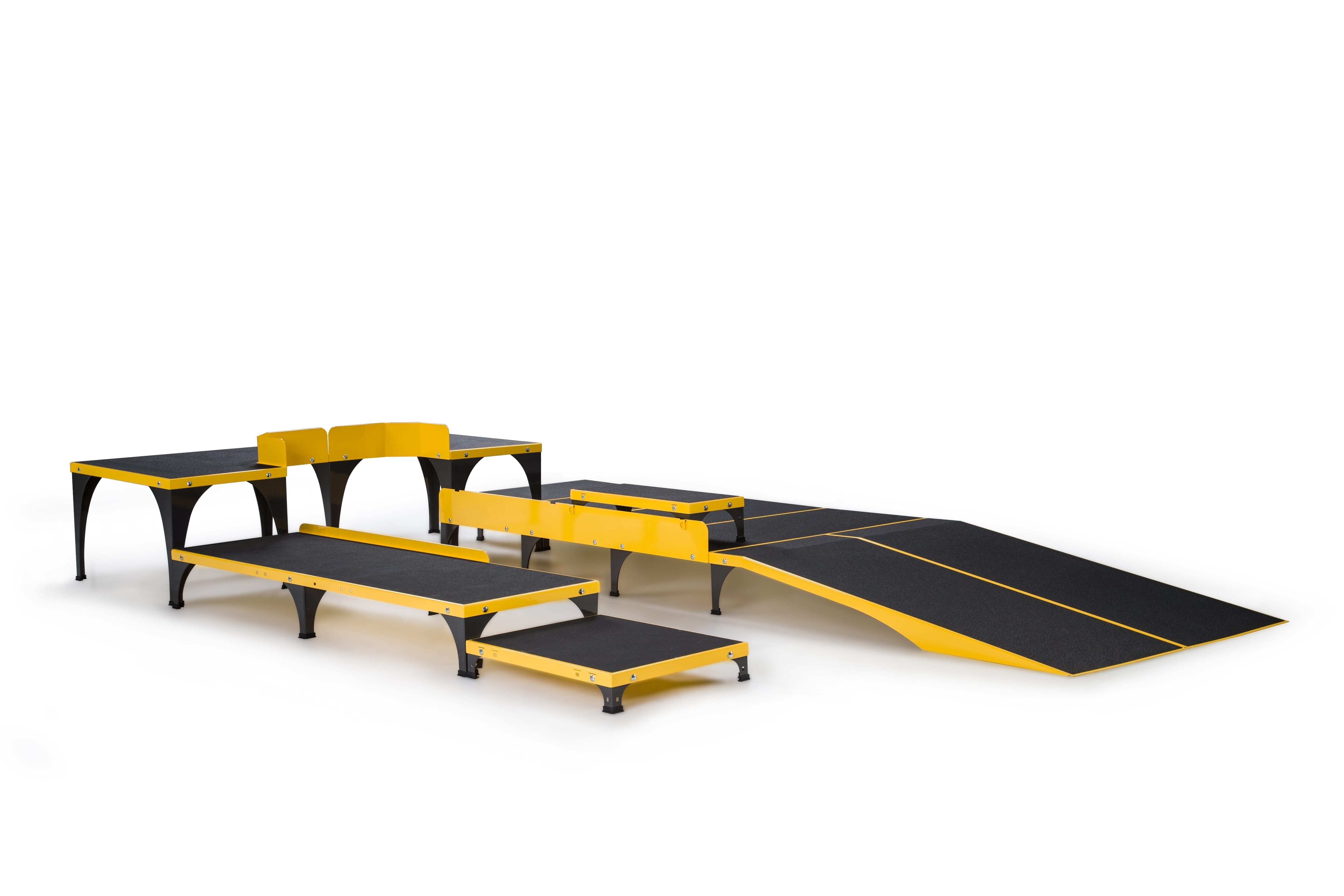ICARE 的智能控制提供了一種既非總是輔助性,也非總是抵抗性的運動。它旨在提供一種「按需輔助」的方法,這與治療師在對患者進行步態訓練時所提供的身體上、直覺上的輔助相似。
ICARE 不僅可以省去臨床治療師以往動輒長達數個小時的手動提攜,還能加強患者使用輔助科技的能力,使他們能夠逐步改善自身的步行與健身能力。

ICARE 的智能控制提供了一種既非總是輔助性,也非總是抵抗性的運動。它旨在提供一種「按需輔助」的方法,這與治療師在對患者進行步態訓練時所提供的身體上、直覺上的輔助相似。
ICARE 不僅可以省去臨床治療師以往動輒長達數個小時的手動提攜,還能加強患者使用輔助科技的能力,使他們能夠逐步改善自身的步行與健身能力。
讓身體無力、麻痺、有平衡困難,以及正從重大傷害或疾病中逐漸康復之患者,重新學習步行並讓身體保持在可活動的狀態,是復健的重要目標。以往若要重新取回步行的能力,患者往往需要進行上千次的類步伐訓練,才能使神經具備持久的可塑性。通常這類患者都會面臨適合其受損或弱化肌肉的復健設備不足之窘境。ICARE 就是為了解決這一窘境而誕生的。
ICARE 是一套完全整合的系統,於 Madonna Rehabilitation Hospital and Research Institute in Lincoln, Nebraska 中開發完成,可為因中風、外傷性腦損傷 (TBI)、局部性脊髓損傷 (SCI) 及其他傷害或疾病而導致神經肌肉失調的患者,提供安全、有效的協助方法。ICARE 的智能控制提供了一種既非總是輔助性,也非總是抵抗性的運動。它旨在提供一種「按需輔助」的方法,這與治療師在對患者進行步態訓練時所提供的身體上、直覺上的輔助相似。ICARE 不僅可以省去臨床治療師以往動輒長達數個小時的手動提攜及伸展四肢工作,還能加強患者使用輔助科技的能力,使他們能夠逐步改善自身的步行能力與心血管健康。
ICARE 的腿部運動與步行時的運動學及肌電模式極度相似。開發研究中注意到,ICARE 的訓練可協助患者重新取得或維持步行時所需要的彈性及肌肉強度,特別是在復健過程中若配合患者的弱點進行調整的話。在 ICARE 的開發過程中,研究團隊也特別針對為患者提供適當水準的輔助,以確保能夠透過部分體重支撐及腳踏板的馬達輔助,達到所需的重複訓練次數。




獲頒獎項
專利
手稿
摘要/簡報
Robert J. McIver, PT, DPT, NCS
臨床技術及健康處主任
Brooks Neuro-Recovery Center Jacksonville, FL
Brooks Rehabilitation 引進 ICARE 已經 2 年多了。這是我們中心使用率最高的器材之一。我們使用 ICARE 治療任何步態或平衡機能受損的患者,無論其診斷結果為何;適用領域包括骨科、神經病學、老年醫學、肥胖病學,以及兒科。我們的病患和員工都樂於使用 ICARE,因為它的功能相當豐富,且設定也非常容易。它可調整的速度及跨距也同時確保了所有的訓練都能配合每個病患的需求進行調整。有的病患參與了我們的獨立計劃,他們來我們中心只是為了使用 ICARE 來保持健康,並維持生活品質。
使用 ICARE 的員工都相當高興,因為藉由使用 ICARE,我們可需要的員工協助較少,在跑步機上花費時間也較短,為我們的病患提供更長的踏步時間。它同時也提供了一種可在安全環境下增加踏步時間的功能,使得我們可以在進行較為功能性的作業,例如伸展或旋轉身軀時,讓下肢持續運動以增加動態平衡。員工和病患都非常喜歡 ICARE,主要是因為無論病患的功能水平如何,它都能提供別的機器無法提供的心血管鍛鍊。
我們曾經有位罹患腰叢麻痺症的患者,無法在他主治醫師的辦公室裡產生靜態的肌電圖。然而當他以較高的速度使用 ICARE 時,就能產生動態的肌電圖。在持續使用 ICARE 進行復健幾個月後,該名病患已經可以在不使用任何輔助裝置的情況下跑步,並與孩子一同玩耍了。在這項發現及機器的介入之前,他原本預期未來都必須要倚賴膝蓋支架,才能站立及行走。
整體而言,ICARE 是一套價格相當實惠的復健科技產品,能讓任何臨床治療師為任何病患設計一套高強度的復健計畫。
Liza Reidel
執行董事
NextStep Orlando (前名為 Project Walk Orlando)
Project Walk Orlando 的使命是讓脊髓損傷的患者,擁有發揮最大復原潛力的機會,並改善他們的生活品質。我們藉由擬定專業的一對一、尖端、積極且全面的運動計畫,達成我們的使命。ICARE 系統在協助我們的客戶和員工達成這個使命的過程中,扮演了不可或缺的重要角色。
我們在客戶的運動計劃中,每天都會使用 ICARE 系統來進行高強度的心血管及步態訓練運動。從客戶及員工的角度而言,ICARE 對於我們的設施來說是一項成功的投資,因為不僅是設定過程相當有效率,訓練師也能確保客戶以舒適且安全的姿勢,進行一切活動。客戶可以在支援脊髓損傷訓練之重複性運動科學的 ICARE 系統上,完成上千次的踩踏動作。除此之外,客戶也能利用回饋功能,如果他們移動橢圓機的速度超過馬達的速度,機器會讓他們知道。在鍛鍊過程中,這項功能總是能讓他們更加努力,並且更有動力。
我們在決定為 PWO 募款並購買 ICARE 系統前考慮了許多因素。這些因素包括系統在減少訓練師人力付出的情況下,改善客戶健康、循環,以及機能的能力。而 ICARE 可以讓我們的客戶進行原先可能需要多名訓練師、助理及耗費龐大時間的上千個步態訓練。
物理治療師 Judith M. Burnfield 博士是 Institute for Rehabilitation Science and Engineering 的所長,運動及神經科學中心主任,以及 Madonna Rehabilitation Hospital and Research Institute 的 Clifton Chair in Physical Therapy and Movement Sciences。在 University of Southern California 取得了肌肉動力學博士學位,並在 Rancho Los Amigos National Rehabilitation Center 中完成了動作病理學的博士後研究。在 Creighton University、University of Nebraska — Lincoln、University of Nebraska Medical Center、以及 University of South Dakota 兼任教職。
她的研究目標為:(1) 強化傷殘及非傷殘個體的生活獨立性及生活品質,並聚焦於行動失調,例如步態;(2) 預防慢性疾病患者的繼發性併發症;(3) 透過開發及應用臨床研究和技術,拓展復健治療師對現有、逐步增加,以及未來社會健保需求對象的應對能力。她教學的重點包括正常及病理性步態、矯形學、修復學及生物力學。